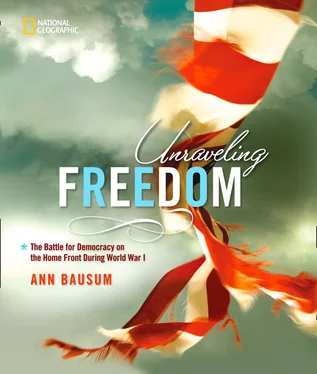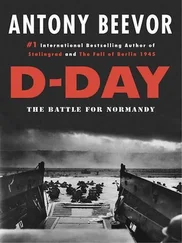Ann Bausum - Unraveling Freedom - The Battle for Democracy on the Homefront During World War I
Здесь есть возможность читать онлайн «Ann Bausum - Unraveling Freedom - The Battle for Democracy on the Homefront During World War I» — ознакомительный отрывок электронной книги совершенно бесплатно, а после прочтения отрывка купить полную версию. В некоторых случаях можно слушать аудио, скачать через торрент в формате fb2 и присутствует краткое содержание. Жанр: unrecognised, на английском языке. Описание произведения, (предисловие) а так же отзывы посетителей доступны на портале библиотеки ЛибКат.
- Название:Unraveling Freedom: The Battle for Democracy on the Homefront During World War I
- Автор:
- Жанр:
- Год:неизвестен
- ISBN:нет данных
- Рейтинг книги:3 / 5. Голосов: 1
-
Избранное:Добавить в избранное
- Отзывы:
-
Ваша оценка:
- 60
- 1
- 2
- 3
- 4
- 5
Unraveling Freedom: The Battle for Democracy on the Homefront During World War I: краткое содержание, описание и аннотация
Предлагаем к чтению аннотацию, описание, краткое содержание или предисловие (зависит от того, что написал сам автор книги «Unraveling Freedom: The Battle for Democracy on the Homefront During World War I»). Если вы не нашли необходимую информацию о книге — напишите в комментариях, мы постараемся отыскать её.
Unraveling Freedom: The Battle for Democracy on the Homefront During World War I — читать онлайн ознакомительный отрывок
Ниже представлен текст книги, разбитый по страницам. Система сохранения места последней прочитанной страницы, позволяет с удобством читать онлайн бесплатно книгу «Unraveling Freedom: The Battle for Democracy on the Homefront During World War I», без необходимости каждый раз заново искать на чём Вы остановились. Поставьте закладку, и сможете в любой момент перейти на страницу, на которой закончили чтение.
Интервал:
Закладка:
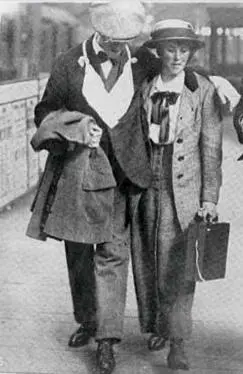
On dry land. Survivors struggled to comprehend the trauma they had experienced during the sinking of the Lusitania.
 BIZARRE STORIES OF SURVIVAL abounded, including the case of Margaret Gwyer who, upon entering the water, found herself sucked into one of the ship’s four smokestack funnels as the Lusitania sank, only to be forcibly expelled from it moments later by a blast of steam from an exploding boiler. She survived, albeit minus most of her clothes and coated in soot and grease. Ian McDermott, shoveling coal in boiler room number two at the time of the attack, found himself washed to safety by seawater that swept through the ship and exited through the room’s ventilation shaft. Parry Jones, a member of a singing group returning from a North American tour, survived an eight-hour stay in the water.
BIZARRE STORIES OF SURVIVAL abounded, including the case of Margaret Gwyer who, upon entering the water, found herself sucked into one of the ship’s four smokestack funnels as the Lusitania sank, only to be forcibly expelled from it moments later by a blast of steam from an exploding boiler. She survived, albeit minus most of her clothes and coated in soot and grease. Ian McDermott, shoveling coal in boiler room number two at the time of the attack, found himself washed to safety by seawater that swept through the ship and exited through the room’s ventilation shaft. Parry Jones, a member of a singing group returning from a North American tour, survived an eight-hour stay in the water.
Some reflexively refused to give up their life jackets. Sorting the living from the dead could be challenging. “Good gracious, are you alive?” asked a startled rescuer after a bellboy from the ship sat up amongst a pile of corpses.
George Hook and his adolescent son and daughter had jumped from the Lusitania’s decks, but had become separated. Father and daughter feared the boy dead even as the son assumed he’d lost them; they were reunited in a Queenstown hospital. The Morton brothers, Lusitania deckhands, presumed each other lost until they coincidentally inspected opposite ends of the same dead body in a makeshift mortuary. Avis Dolphin, a 12-year-old Canadian on her way to school in England, credited her survival to a friendly Scottish professor who had personally tied on her life jacket, an act that became crucial after her lifeboat capsized and dumped her into the water. When last seen by Professor Ian Holbourn, Avis was being sucked underwater in the Lusitania’s wake. She surfaced soon after, and the friends met again in Queenstown.
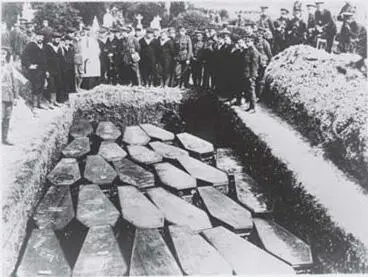
Remembering the dead. Nearly 150 bodies recovered from the Lusitania could not be identified. They were buried in one of three mass graves on the outskirts of Queenstown. Coffins were in short supply locally; more had to be shipped in from other cities.The bodies of Americans were returned to the United States unless relatives requested that they be buried in Ireland.

Artists drew countless cartoons about the attack on the Lusitania. Many emphasized the innocence of the youngest victims and the ship’s poor defenses, no better than toy cannons.
The mounting collection of bodies—stacked at first like cordwood and then laid out in makeshift morgues—made the day’s losses very real and very horrifying. Corpses with missing limbs and disfigured faces revealed the brutality of the final moments of life and the natural ravages of even a few hours spent in the ocean. Seagulls pecked out eyes. Scavenging fish ate away limbs. Torsos turned up without heads. Intact bodies became bloated with seawater. As gruesome as the task was of identifying the dead—and some bodies could not be identified at all—the presence of a corpse brought closure to surviving family members. The absence of a body left friends and loved ones on edge, hoping for a miraculous recovery of someone at an isolated point on the Irish coast or among those unidentified survivors housed at area hotels and hospitals.
Among the missing were Alfred Vanderbilt, observed by many in the act of helping others during the Lusitania’s final chaotic minutes above the surface. Charlotte Pye attested that Vanderbilt had taken off his own life jacket and placed it on her before helping her enter a lifeboat with her infant daughter. The millionaire’s body was never recovered.
Neither were the bodies of most of the dead. Even though corpses washed ashore in the weeks after the sinking, some 900 people remained missing and were never seen again. Still-fresh memories from the accidental sinking of the Titanic three years earlier may have made reports of the Lusitania’s destruction that much more grim and vivid. About two-thirds of the 1,962 individuals who sailed on the Lusitania’s final voyage perished, including 785 passengers and 413 crew members. Just 35 out of 129 children survived; nearly all infants perished. A total of 128 Americans lost their lives.
News of the catastrophe spread rapidly by way of telegraphed messages and phone calls. Soon banner headlines on both continents began to convey the horrors experienced by survivors, the extensive loss of life, and the almost immediate destruction of what had been considered, like the Titanic, to be an unsinkable ship. It did not take long for the tragedy to be transformed into a battle cry that would help inflame and expand the European conflict into the First World War. That cry echoed from shore to shore. It was passed along through newspapers, plastered onto military recruitment posters, and evoked with passion from the halls of the British Parliament to the chambers of the United States Capitol. And it rang from the voices of Allied soldiers as they charged across European battlefields. The voices rose and swelled into an enduring chorus: “Remember the Lusitania!”
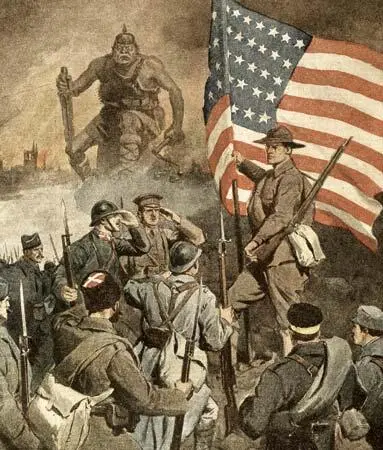
War work. Few experiences in Woodrow Wilson’s life prepared him to be a wartime Commander in Chief while President of the United States. He had rarely traveled, never served in the armed forces, and barely studied military history.
2
“We must throw the influence of this nation in behalf of a plan…. This is the part I think you are destined to play in this world tragedy, and it is the noblest part that has ever come to a son of man.”
EDWARD M. HOUSE, ADVISING WOODROW WILSON TO TAKE AMERICA TO WAR, 1915
A CALL TO ARMS
BEFORE MAY 7, 1915, few people really believed that German subs could catch and attack the mighty Lusitania, or that German officers would dare to fire at the passenger ship without warning, or that the vessel could be destroyed so completely and rapidly. Such concepts were unthinkable, beyond imagination, in much the same way that few people anticipated the calculated and catastrophic terrorist attacks of September 11, 2001, on New York City’s World Trade Center and other U.S. sites. The sinking of the Lusitania was the 9-11 of its time, and, like 9-11, it served as a backdrop as the United States moved toward war. Perhaps the most remarkable difference in the case of the Lusitania is that so much time passed between calamity and combat.
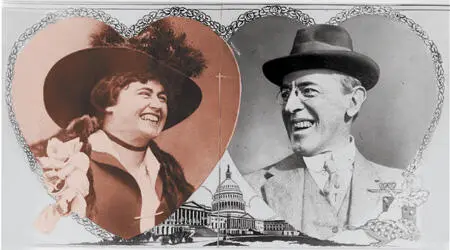
Wilson speaks out. Woodrow Wilson was the first U.S. President since John Adams to formally address Congress. He made repeated speeches there during his Presidency, including his 1917 appeal for war. Wilson wrote his own speeches, often typing them himself on his portable typewriter. He proposed to his future second wife, Edith Bolling Galt (far right), just days before the Lusitania’s sinking. His first wife had died the same month that war broke out in Europe.
Читать дальшеИнтервал:
Закладка:
Похожие книги на «Unraveling Freedom: The Battle for Democracy on the Homefront During World War I»
Представляем Вашему вниманию похожие книги на «Unraveling Freedom: The Battle for Democracy on the Homefront During World War I» списком для выбора. Мы отобрали схожую по названию и смыслу литературу в надежде предоставить читателям больше вариантов отыскать новые, интересные, ещё непрочитанные произведения.
Обсуждение, отзывы о книге «Unraveling Freedom: The Battle for Democracy on the Homefront During World War I» и просто собственные мнения читателей. Оставьте ваши комментарии, напишите, что Вы думаете о произведении, его смысле или главных героях. Укажите что конкретно понравилось, а что нет, и почему Вы так считаете.
